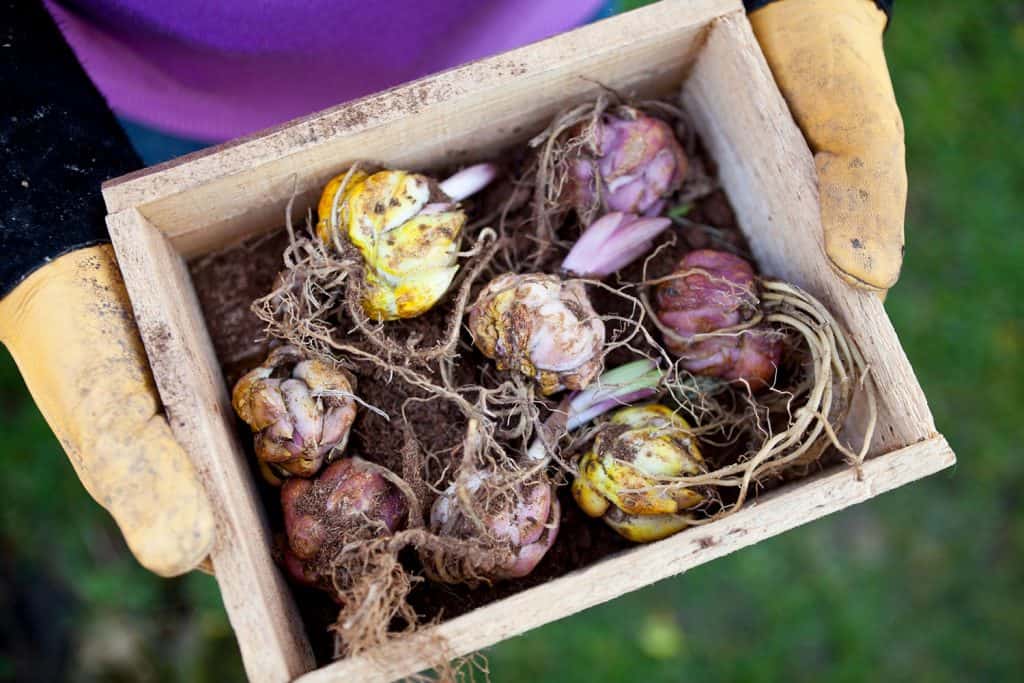Asiatic lilies are one of the most beautiful and exotic plants to have in your garden. But lilies grow from bulbs, which means that more bulbs will form over time, and the lilies can spread. Sometimes they need to be transplanted to keep them from becoming too crowded. We've done the research to teach you when and how to transplant Asiatic lilies properly.
For best results, you should transplant Asiatic lilies during the fall. This will give them time to become acclimated to their environment over winter and produce blooms the following spring. The exact best time to transplant lilies during the fall will depend on your specific location.
While transplanting lilies may seem like a difficult task, it is a common practice beneficial to them. Transplanting allows them to thrive and continue producing blooms. In this article, we'll provide you with all the details about the best time to transplant Asiatic lilies and how to do it properly. Continue reading to learn more.

When Is The Best Time To Transplant Asiatic Lilies?
Asiatic lilies are exotic plants that can thrive in a variety of different climates. But what's unique about lilies, in general, is that their bulbs don't go dormant as other plants do. With that being said, it can be tricky to know when to transplant the lilies so that they continue to bloom.
Asiatic lilies bloom during the summer, so the best time to transplant them is during the fall after they have finished blooming. But, the start of fall weather can look different depending on the climate where you live, so this is where some of the confusion comes in when it comes to the best time to transplant your lilies.
In most areas, you can transplant your lilies in late September or early October. However, Asiatic lilies in some areas may still be producing blooms at this time. Ideally, you will want to wait until the plant is no longer blooming. But, you don't want to wait until the first frost to move them because the bulbs may not be able to acclimate as well.

At the absolute latest, you should transplant Asiatic lilies about one to two weeks before the predicted first frost. This will still give the bulbs plenty of time to store up the energy and nutrients they need to survive the winter.
Another important thing to note is that you don't want to transplant lilies too often. It's best to only transplant them every 3 to 4 years, giving them time to develop fully. Transplanting lilies too frequently may hinder their growth or cause them to not flower for several years.
If you have a flower garden with peonies too, you may have questions about transplanting them. Head over to this article for more info: When To Transplant Peonies
How Do You Transplant Asiatic Lilies?

Transplanting Asiatic lilies at the right time and correctly is essential for the plants' survival. Here are the steps you should follow for the best results.
Dig Up The Lilies
Remember that it is best to wait until the fall to dig up and transplant your bulbs. You’ll know that they are ready to dig up when the stems and leaves turn from yellow to brown.
When digging up the bulbs, you don’t want to dig too close to them, or you could damage the bulb. Instead, start digging about 3 to 4 inches out from the base of the flowers and work your way around in a circle. You should dig about 6 inches down into the dirt.
Once you’ve dug around the lilies, use your trowel to pry the bulbs up from the dirt gently. You may have to slowly work your way around the bulbs again to loosen the soil better. Continue to work around the bulbs until you can pry them up easily.
Divide The Lilies
Next, you will want to divide the lilies. To do this, you should gently pull the bulbs apart from each other. You will need to brush off the dirt first to see where the bulbs are joined together. After pulling the bulbs apart, separate them into three groups based on the size of the bulb.
The size of the bulb will determine how quickly the lilies will bloom. Large bulbs should bloom during the next growing season, but medium and small bulbs may take anywhere from 2 to 4 years before they bloom.
You will also want to look for any bulbs that are showing signs of disease or rotting. If the bulb is soft, falling apart, or has black mold or mildew on it, the bulb is no longer good. You do not want to plant it because any disease could spread to other plants. You can throw the bad bulbs into your trash can.
For the bulbs that are good, you should separate the actual bulb from the brown foliage left behind by the previous stem and flowers. Grab the bulb at the base of the stem and gently twist the stem until it separates from the bulb. Plant the bulbs as soon as possible so that they don’t dry out.
Plant The Bulbs
When planting the Asiatic lily bulbs, find a spot that gets full sun (at least 6 hours a day). Once you’ve found a good location, measure the height and width of each bulb.
Dig a hole that is three times deeper than the bulb's height and two times wider than the width. This will ensure that each bulb will have plenty of room, and the soil will be warm enough for the bulb to survive through the winter.
If you wish, you can add a couple of inches of compost into the hole to help maintain soil health and replenish nutrients. Compost can also provide nutrients to the bulb during the winter.
You can place up to three bulbs in each hole if you space them about ½ inch apart from each other. Ensure that the pointed end you removed the stem from is facing up so that the plants can grow properly.
All of the roots attached to the bulb should be in the hole so that they can absorb the most nutrients. Then, cover the bulbs back up and finish filling the hole with the leftover soil.
Compact the soil on top of the bulbs to secure them, then thoroughly water the area where you planted the bulbs and keep the soil moist throughout the fall and winter. Lastly, you will want to mark the location where you planted the bulbs.
Click here to see these plant markers on Amazon.
See More: 6 Types Of Compost You Should Know
Can You Transplant Asiatic Lilies In The Spring?
You can transplant Asiatic lilies in the spring. However, spring is the start of the lilies’ growing season.
If you transplant them in the spring, you may interfere with their growth, and they may not flower during the summer because the bulbs didn’t have time to become acclimated to the soil. It is likely that the lilies won’t bloom until the following spring or summer when they have more time to become established.
Will Asiatic Lilies Spread?
Yes, Asiatic lilies will spread. This is because the original bulbs will eventually stop producing flowers, but new bulbs will form from the existing bulbs. The bulbs can multiply very quickly, and lilies can quickly overtake the area where they are planted. That’s why dividing and transplanting the bulbs is sometimes necessary.
When Can You Dig Up Asiatic Lily Bulbs?
Fall is the best time to dig up Asiatic lily bulbs after the foliage has turned brown. However, if you forget to do it in the fall, you can also dig them up in late winter or early spring as long as they haven't started growing yet. No matter when you dig them up, remember to plant them as soon as possible so that the bulbs don't dry out.
Do Asiatic Lilies Bloom All Summer?

According to the Old Farmer's Almanac, Asiatic lilies are some of the first lilies to bloom during the summer. But, they typically bloom for around one month instead of the whole summer. Exactly when they bloom depends on the climate in your area and when it warms up enough for them to bloom.
What To Do When Asiatic Lilies Have Finished Flowering?
After an Asiatic lily has finished flowering, you should remove the spent bloom as soon as possible. The same lily plant won't bloom again during that season, but the plant will start to produce a seed pod. This can draw energy away from the bulb and cause the flower not to bloom next year.
You can pinch them off with your fingers or cut them off using garden shears. Just don't remove anything other than the bloom. The leaves are still needed to create energy for the plant. They will eventually wither and turn brown as well, at which point they can be removed.
Final Thoughts
Transplanting your Asiatic lilies in the fall will provide you with the best results! Your flowers will have time to acclimate to their new environment before their growing season in the spring. Let us know in the comment section below all about your Asiatic lilies!


How to control insects that leave holes in the leaves after the plant has bloomed.
@Claire, I catch slimy worms under the leaves at the beginning of the growing season every year. It’s disgusting but I wipe them off by hand. Sometimes there are tiny worms inside; others are just the slime. If I catch them in time, the leaves will be fine. Hope that helps!
I have a red tiger Lily I planted in 2021 was a single bulb not tiny ones on it or anything it bloomed had 4 blooms maybe. This year 2022 it had 11 blooms and 9 baby plants that each had a single bloom grow of it. Is that normal? Can I separated it now?
I am a first time Asiaiac lily owner, I planted it with white pansies, was that a good idea?? I’m not sure because my pansies are getting to big. Do I seoeraye them now